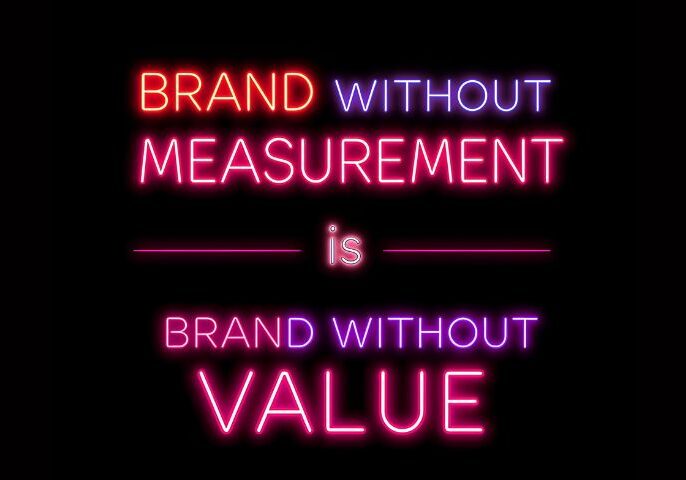The uncomfortable truth about why rebranding projects fail and what you should consider before diving in
That uncomfortable feeling that your current brand isn’t quite working usually starts as a nagging doubt. Maybe it’s feedback that your organisation seems “unprofessional” or “dated.” Competitors appear more polished, or you’re struggling to attract the right clients. The natural response is to think about visual changes – a new logo, fresh colours, updated website design.
But here’s what I’ve learned from working with organisations through rebranding challenges: the ones that achieve lasting results rarely start with design. Instead, they begin by honestly examining what’s holding them back from connecting with their audiences effectively.
The Three Critical Missteps That Derail Rebranding Projects
Understanding where rebranding efforts commonly go wrong reveals why some organisations invest significant time and money only to find themselves back where they started – or worse, more confused than before.
Communication without clarity becomes the first major stumbling block. Many organisations operate under the assumption that one message can effectively serve multiple audiences, or that being broadly appealing is safer than being specifically relevant. This results in communication that feels generic to everyone, rather than compelling to anyone, regardless of its professional design or the budget allocated to its distribution. When your messaging tries to be everything to everyone, your visual identity becomes decoration rather than communication.
Promises that don’t match practice create the most expensive type of brand failure. This authenticity gap emerges when organisations focus on how they want to be perceived rather than honestly assessing how they operate. A fresh logo might create initial interest, but if your day-to-day delivery doesn’t align with your brand promises, every customer interaction becomes an opportunity for disappointment rather than relationship building. No amount of visual polish can compensate for operational inconsistency.
Treating symptoms instead of causes represents the costliest mistake in rebranding. When organisations approach brand challenges as purely aesthetic issues, they invest in solutions that address appearance without improving effectiveness. A flashy website might improve first impressions, but it won’t increase conversions if your fundamental value proposition still isn’t clear. Updated business cards might look more professional, but they won’t help you connect with prospects if your messaging doesn’t address what your audience cares about.
What Happens During DIY Rebranding
Here’s what I typically see when organisations handle rebranding internally without a clear strategy.
The Endless Revision Cycle
Without a clear strategic direction guiding decisions, rebranding projects often become exercises in continuous tweaking. “Make the logo bigger.” “Can we try a different font?” “The blue isn’t quite right.” These revision cycles consume time and budget whilst moving further away from solutions that serve business objectives. The absence of strategic criteria for decision-making means choices get made based on personal preference rather than effectiveness.
Implementation Chaos
Creating individual brand elements represents just the beginning of a much larger operational challenge. Rolling out a new identity consistently across websites, social media, printed materials, signage, uniforms, and digital assets requires systematic planning that’s often more complex than initially anticipated. Without comprehensive guidelines, organisations usually end up with beautiful logos that don’t work at small sizes, colour schemes that look entirely different in print versus digital, or messaging that varies depending on who’s writing it.
The Opportunity Cost Reality
Perhaps most significantly, the time spent managing DIY rebranding is time not available for activities that directly serve business goals. For every hour your team spends debating design choices, that’s capacity not directed toward serving clients, developing products, or building the relationships that drive growth. This hidden cost often exceeds the financial investment in professional help, particularly when projects extend beyond their planned timelines.
The Professional Alternative and What Works
A strategic approach to rebranding looks quite different from the visual-first method that many organisations instinctively adopt.
Starting with Strategic Clarity
Before touching any visual elements, successful rebrands begin with fundamental questions that many organisations haven’t fully considered. What are you trying to achieve beyond “looking more professional”? Who specifically are you serving, and what do they need from you? What makes you genuinely different in ways that matter to your audience? How do you want people to feel when they interact with your brand, and is that feeling aligned with the value you deliver?
Building from the Inside Out
The most effective rebrands start with internal alignment that goes beyond surface-level agreement. What are your actual values, not the ones on your website, but the ones that drive decision-making when things get difficult? How do these translate into the way you communicate with different stakeholders? What promises can you realistically keep, and how do those promises differentiate you from alternatives your audience might consider?
Testing Before Committing
Professional rebranding involves validating ideas with real stakeholders before finalising anything, which prevents costly mistakes and ensures the final result improves your position. This consists of testing messaging concepts with key clients to ensure they resonate and verifying that your new visual direction enhances recognition without disrupting the established relationships.
Planning for Implementation
Successful rebrands include detailed guidance for how the new identity will work in practice across every touchpoint where people encounter your organisation. This means considering everything from business cards to website headers, from email signatures to social media profiles, and ensuring consistency that reinforces rather than undermines your brand message.
When DIY Might Work and When It Definitely Won’t
DIY rebranding might be appropriate when you have genuine design and marketing expertise within your team, you’re making minor updates rather than fundamental changes, you have a clear understanding of your market position and messaging, and you have realistic timelines and budgets for proper implementation across all touchpoints.
Professional help becomes essential when you’re unclear about what you’re trying to achieve beyond “looking more professional,” you’re entering new markets or targeting different audiences, your internal team disagrees about brand direction, you’re dealing with complex stakeholder relationships, or the rebrand needs to support significant business growth or change that requires an external perspective.
The Real Question You Should Be Asking
Rather than “Should we rebrand?” or “Can we do this ourselves?” the more useful question becomes “What problem are we trying to solve?” This shift in thinking often reveals whether you’re dealing with a visual refresh requirement or a more fundamental strategic challenge.
If the answer is simply “Our logo looks dated,” you might just need a design refresh that skilled internal resources could handle effectively. But suppose you’re struggling with market position, customer confusion, or growth challenges. In that case, those issues require strategic thinking that goes far beyond visual identity and often benefits from external expertise and perspective.
Making the Right Choice for Your Organisation
The most successful rebranding projects, whether handled internally or professionally managed, share one characteristic that sets them apart from failures. They start with an honest assessment of what needs to change and why, rather than jumping immediately to solutions that might address symptoms rather than causes.
This approach means acknowledging when you have the expertise to tackle challenges internally, and recognising when you need an external perspective to see blind spots or challenge assumptions. It means understanding that rebranding is ultimately about communication effectiveness, not just visual appeal, and that the goal is stronger relationships with the people who matter to your organisation’s success.
Most importantly, it means accepting that rebranding is an investment in your organisation’s future that deserves the same careful consideration you’d give to any significant business decision. Whether you choose to handle it internally or work with professionals, cutting corners on strategy, research, or implementation often costs more in the long run than approaching it correctly from the start.
Ready to explore what your organisation needs to strengthen its brand position? Let’s start with an honest conversation about your challenges, aspirations, and resources.
No jargon, no hard sell, just honest discussion about making your brand work harder for your business.






